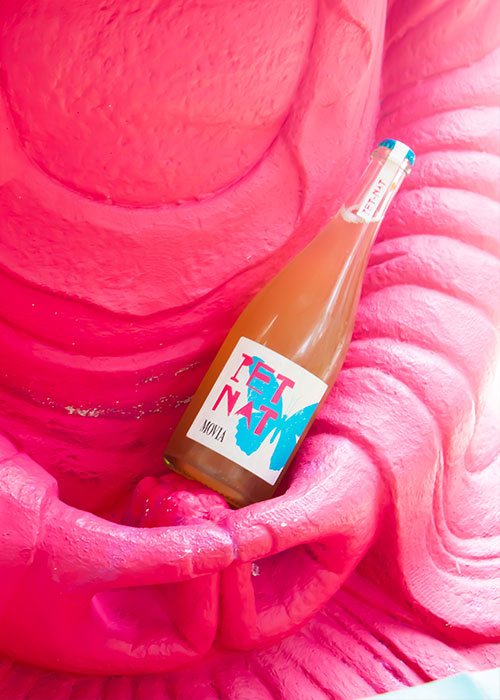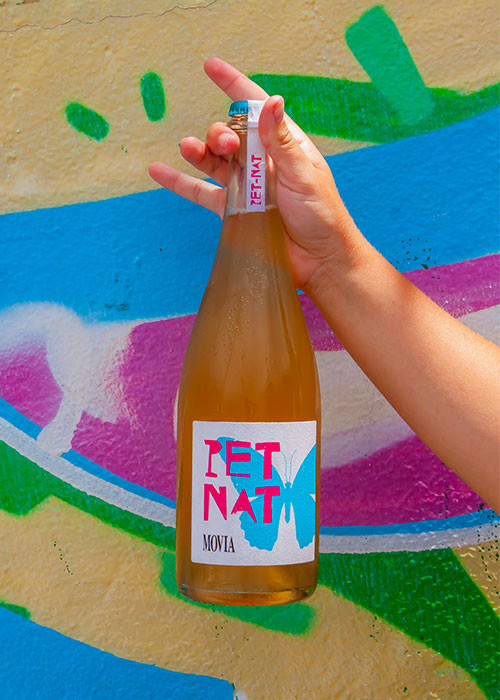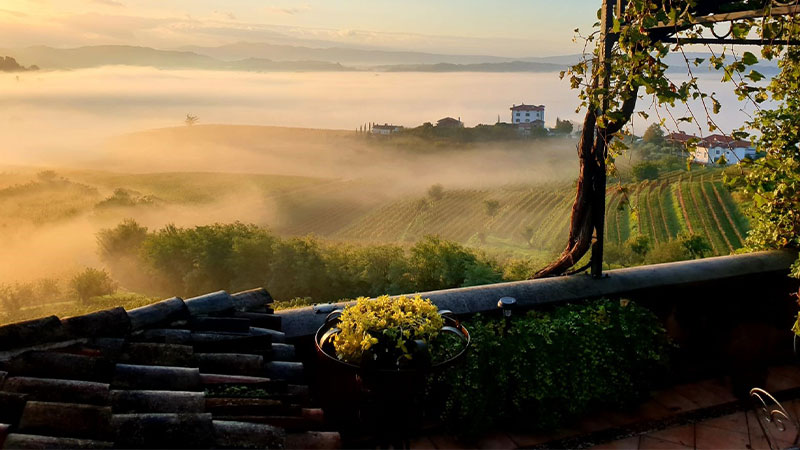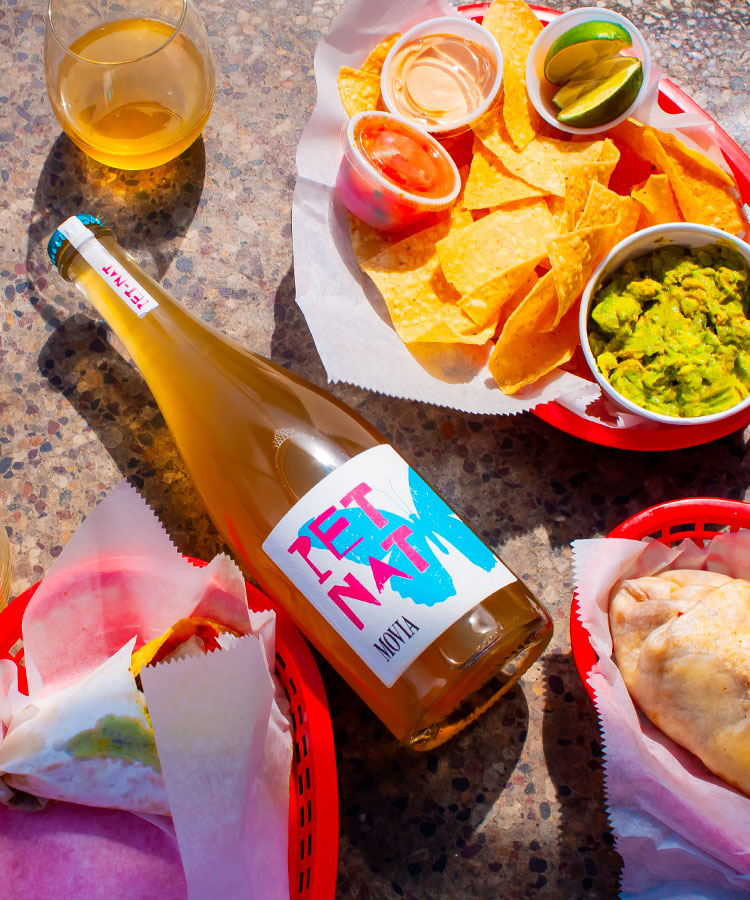
Over the past 2,000 years, since they were first planted and tended by Celtic and Illyrian tribes, Slovenian vineyards have served as a backdrop for some of the most monumental moments in world history. Today, those vineyards have piqued the attention of sommeliers, critics, and wine lovers around the globe. Perhaps no producer represents the region’s promise more than Movia, established in the country’s western coastal appellation in 1820 by the Kristančič family.
With the release of its 2022 Movia Pét-Nat, the winery initiates a changing of the guard that draws on its remarkable multigenerational legacy. As the brainchild of up-and-coming winemaker Lan Kristančič, son of the “wine genius of Slovenia,” Aleš Kristančič, Movia Pét-Nat showcases organic, estate-grown fruit and brilliantly expresses the potential of this unsung wine region.
Behind the bottle lies a story that reads like something out of a gripping historical novel: Family forebear Anton Kristančič was a commandant in the fight against fascism during World War II. As it’s told, he convinced Yugoslavian dictator Josip Broz Tito — who had a particular fondness for Kristančič wines — to let the family winery continue operating, even as neighboring vineyards were being seized. In this way, Anton safeguarded more than a century of family viticultural wisdom. Today, that expertise shines in every drop of Movia wine, and in the eyes of the next generation.
Aleš Kristančič (Anton’s grandson) has led Movia for the past couple of decades, showing an unflagging respect for the land that’s helped breathe new life into post-war vineyard sites. Today, Aleš’s son Lan complements his experience by bringing a fresh perspective to the production process. For both father and son, creating wines that reflect a sense of place is essential.
Where in the World is Movia — and What Makes Its Terroir Distinctive?

Movia is practically in Italy, believe it or not. While the winery’s cultural identity is thoroughly Slovenian, geographically, it can also claim Italian soil. More than half of its 38-acre estate straddles the Italian border along the far western edge of Slovenia.
Known as Primorska (which translates as “coastal” in Serbian), this region’s proximity to the Adriatic Sea offers a relatively warm climate. Sunshine and balmy breezes make for thriving vineyards, particularly Cabernet Sauvignon, Merlot, and Carmenere, along with traditional grapes like Rebula (a.k.a. Ribolla Gialla) and Tokaj. Within Primorska lies the subregion of Brda (“hills”), as the place is defined by undulating landscapes.
Soils in Brda are typically a combination of ancient clay, marl, limestone, and sandstone layers — locally called opoka. Opoka is celebrated for yielding wines of considerable vibrancy, structure, and longevity. In other words? This is really good dirt.
In the heart of Brda, you’ll find the Movia estate, with vineyards that include Chardonnay, Rebula, Pinot Grigio, Sauvignon Blanc, Pinot Nero, Cabernet Sauvignon, Merlot, Malvasia, and Sauvignon Vert. For the past 20 years, Movia has been certified by the European Organic Certifiers Council and also operates as fully biodynamic. The Kristančič family is doggedly committed to careful cultivation practices that eschew pesticides, fertilizers, and other extraneous inputs. All grapes are dry-farmed and manually harvested.
The family’s commitment to Earth-friendly practices continues in the production cellar: No commercial yeasts are employed. Slovenian oak is used primarily, keeping materials local. Minimal sulfur dioxide keeps the wines fresh without overpowering their aromas and flavors. Fining and filtering procedures are carried out according to the atmospheric pressure incurred by the arrival of the new moon. (Yes, it sounds far out. Yes, it’s a thing.)
If it sounds like the Kristančič family goes the extra mile, it’s true — they do. Their attention to detail adds up to an ethos that is reflected in all their wines, including their latest release, the 2022 Movia Pét-Nat.
Wait. What is Pét-Net, Exactly?

You’ve sipped it, you’ve savored it — but you might still wonder what makes Pét-Nat any different than other sparkling wines.
Pétillant-Naturel is a bubbly wine made with a technique that originated in southwestern France in the 1500s, called méthode ancestrale. This process involves only one fermentation, and bottling takes place before primary fermentation is finished while sugars are still actively converting to alcohol. (In contrast, Champagne production involves a second fermentation in the bottle, and the addition of sugars, to create bubbles.)
Typically, a bottle of Pét-Nat is sealed with a crown cap, like the kind on a glass soda bottle, to trap a small amount of carbon dioxide. Since no additional secondary yeasts or sugars are added, wines tend to be lower in alcohol than the average commercial sparkling wine.
Serving note: Pét-Nat bubbles tend to be softer than those in Champagne. If you’re a fan of fizz, chill for 30 minutes, open, and serve immediately, when the bead is strong and the aromas are fresh.
A Taste of Slovenia

When crafting the 2022 Movia Pét-Nat, Lan Kristančič looked first to a regional favorite: Rebula. Cultivated in the area since the 13th century, Rebula is characterized by zingy acidity and abundant citrus notes. The fruit can gain depth, texture, and flavor with even a short period of skin contact. (Did someone say orange wine?) This Rebula was given about 24 hours of skin contact, then co-fermented with 50 percent Chardonnay for a balanced flavor. Wild yeasts only, naturally.
“In my career as a winemaker, my vision and goal is to find a balance between the vine and nature,” Lan says. “Meaning I would like to get to know our vines and vineyards to the point where I make wines with as little intervention as possible, always keeping the elegance, high complexity, and freshness in the glass.”
Movia Pét-Nat was produced in partnership with U.S. importer Ethica Wines in a limited release of just 12,000 bottles. Pop the cork and behold the bright future of Slovenian wine.
This article is sponsored by Ethica Wines.
